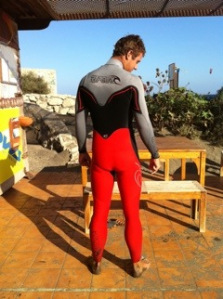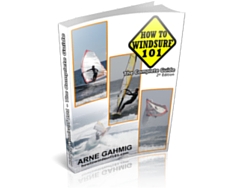This is a post I wrote a year ago on an old blog and thought I would post it on here also.
When we need to buy a wetsuit there are a couple of things we have to take into account. We have to ask ourselves questions such as:
- What sport do we want to do with it?
- What temperatures are we going to use it in?
- How long will the sessions be that we use it?
The basic things to look out for are:
Thickness
Depending on the temperature of the air and water that you are going to be in and the length of time that you are going to spend in it you will need a different thickness of wetsuit. It hardly bears mentioning that warmer waters require less thickness than cold waters. Also, you may be in a country where the actual temperature is warm but the water is cold so bear that in mind.
I was surfing in Portugal in July and despite the heat on the shore (and boiling inside the wetsuit) the water was rather cold and only permitted sessions of around an hour with long wetsuits.
Naturally ones body constitution will have an impact on the thickness you need. I have seen guys in the water in board shorts while others needed long suits.
Then again, if you are windsurfing and you are rarely in the water and the air is warm, maybe a thinner one will do.
Type
As with thickness, this too depends on the temperatures but also on the use it is destined for. There are currently all combinations of long or short sleeves with long or short legs.
For kitesurfing for example, long legs are not too practical as the spray from a twin-tip board will get fired into the leg and not come out through gravity alone, meaning the calf of the wetsuit will be bulging with water which firstly reduces mobility and secondly wears out the elasticity of the suit. A solution is to buy a long sleeve-short leg suit. I have also seen some riders buy a long sleeve-long leg suit and cut off the legs just below the knee. Personally, I don’t feel like spending a load of cash on a wetsuit just to cut it up, but that might just be me.
Also you might not want to get the surfers tan meaning that long sleeves and/or legs is what you are looking for.
Quality
This is up to each individual. It depends on how long you want the wetsuit to last and how long your sessions are going to be. You will not need a top quality suit if you are going into warm water for half an hour every weekend but it is important if you are going to spend all day in it every other day.
The material of the wetsuit will also impact on how easy it is to get on and off and on how well it moulds to your body. Check out the elasticity and the combination of materials found in the suit.
Zipper
This comes in two parts. Firstly the zipper itself. There are different setups such as along the spine, across the back or across the chest. The most applied so far has been the zip up the spine which required the use of a cord or band to pull it up. This band can be irritating if you are windsurfing or kitesurfing and have it flapping about in your face. You can tuck it down the collar but it can be just as uncomfortable.
Then there is the neoprene cover on the inside you need to take into account. Up until a few years ago, along the zip on one side there would be a few centimetres of neoprene to reduce the amount of water coming in through the zip. There is nothing as cruel as a warm wetsuit spoilt by that trickle of icy cold water down the spine.
Nowadays the better wetsuits will have the complete area of the back protected with a neoprene surface. Some even make sure it reaches up to the neck with a collar attached to pull over your head.
Feeling
And yes, It should make you look good ;)Last of all, and sure not least, you must make sure the wetsuit feels good when you wear it. Don’t settle for anything less than something that feels like a second skin. Make sure the size is correct. I wear a MT (Meduim Tall). An L would be too wide for me and an M would be too short and be too tight around the crotch and shoulders. It also won’t reach down to my ankles properly.
If there are any creases in it or areas that are not directly on your skin when you wear it comfortably, go down a size.
Try it on and move around in it. Move your arms to simulate paddling, you don’t want the wetsuit biting your armpit. Move your legs around, nothing more annoying than that pinch in the crotch.
This might make you sweat a little in the shop but rest assured that it will save you a heck of a lot of trouble later in the water.
That’s all from me on buying wetsuits. If you want to read some more about the working of wetsuits and the different details between wetsuits, check out the post on buying a wetsuit by the guys from Poole Windsurfing.





